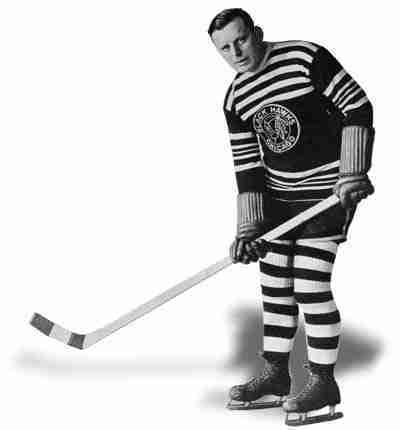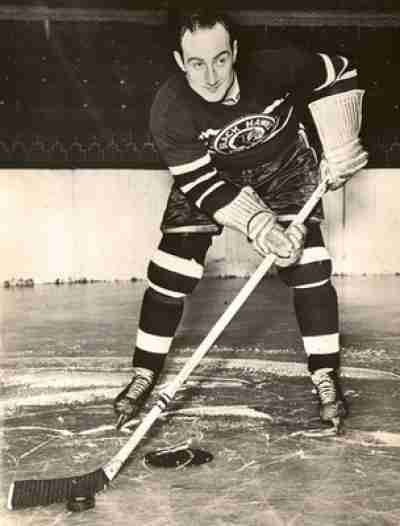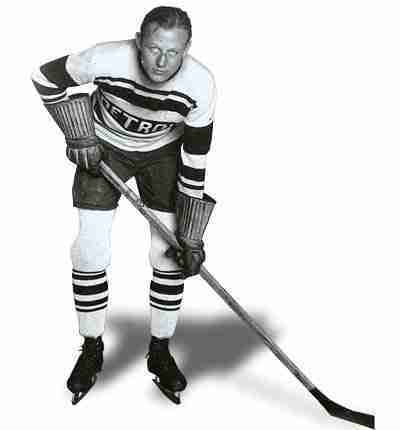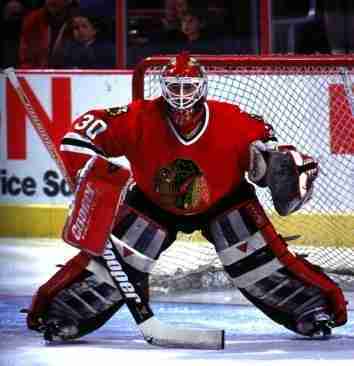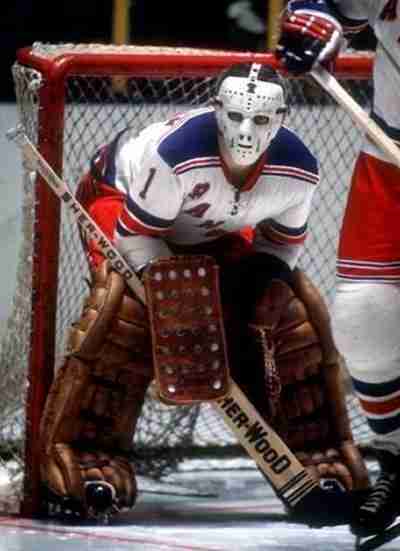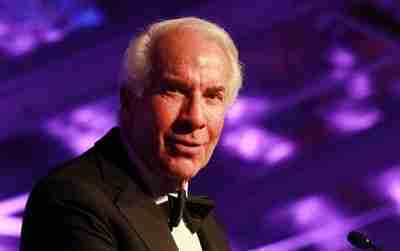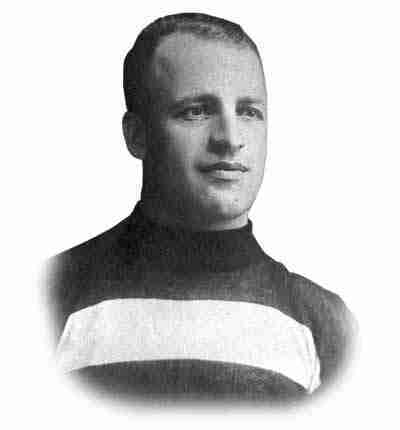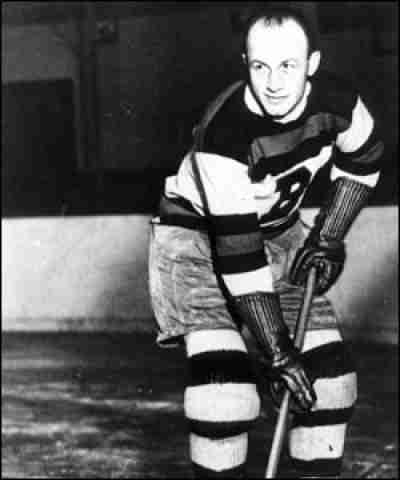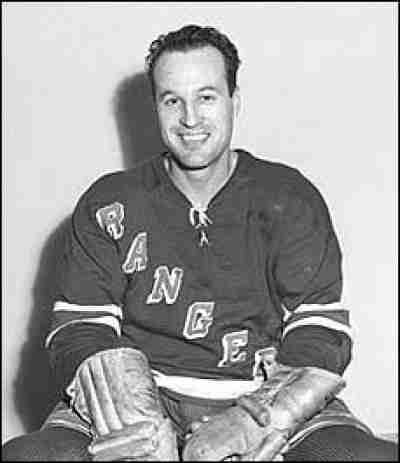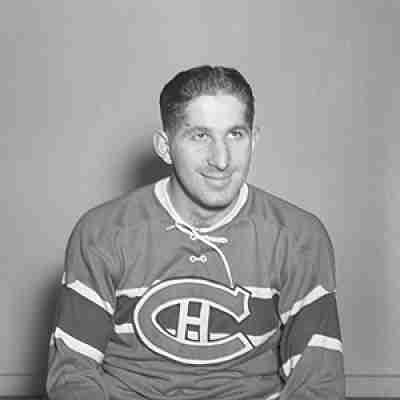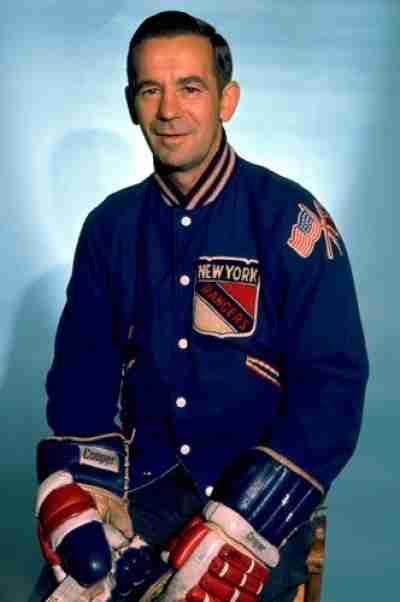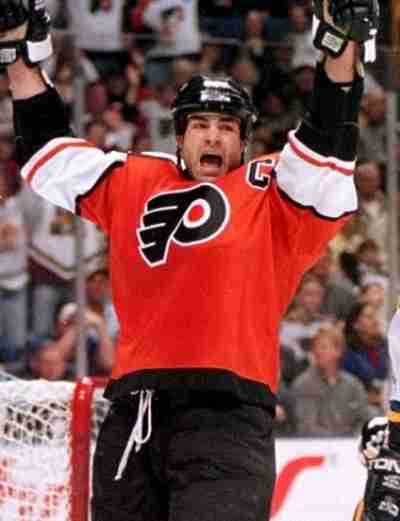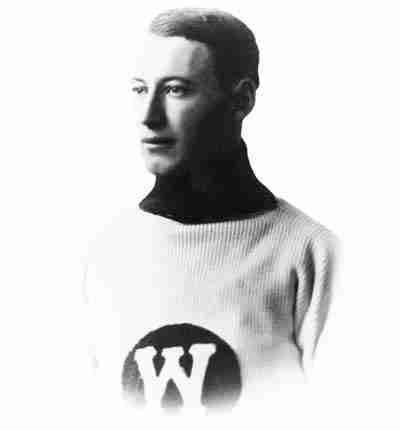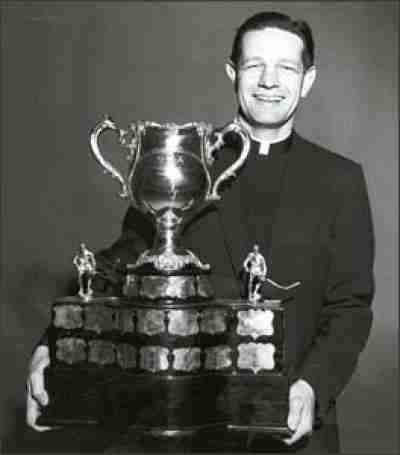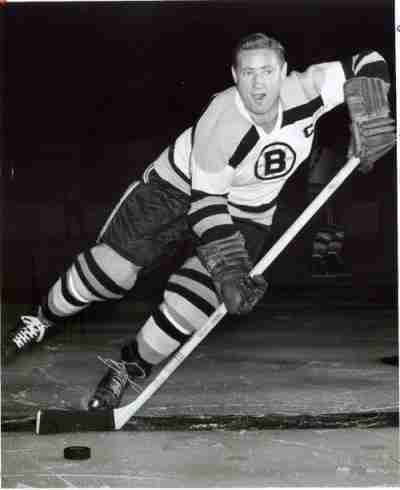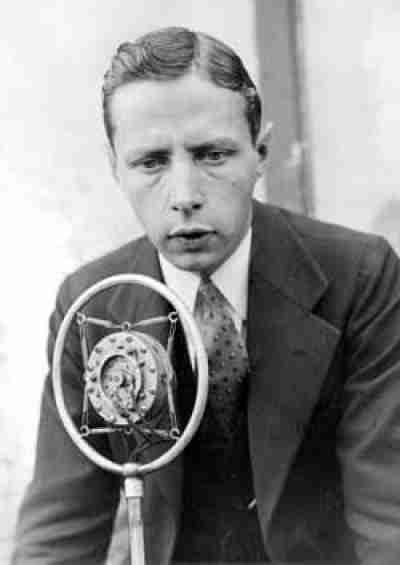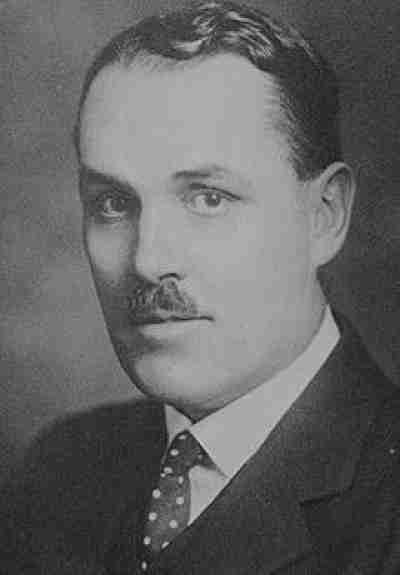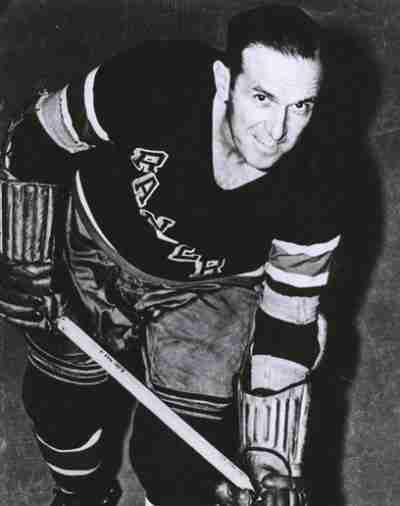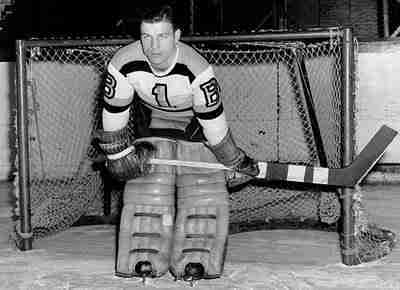Best known for becoming a First Team All Star in the five years of the Western Canadian Hockey League’s existence, Duke Keats was a gifted offensive player in his prime. Keats may have had his best season out West, but he did eventually make his way to the NHL and held his own. Keats induction to the Hall is predominantly based on his work in the WCHL which was certainly justified.
A rugged stay at home star at Defence, Earl Seibert was named to a post season All Star team ten consecutive years. Had it not been for Eddie Shore, Seibert would have possibly been considered the best Defensemen of his era, but the tough Shore had confessed that Seibert was one player he was not fond of fighting. Seibert would win the Stanley Cup twice (once for Chicago, the second with the Rangers) and was a big part of those wins. Seibert unfortunately also became known for shattering Howie Morenz’ leg in multiple places, when he crashed into the legend into the boards. Some fans may remember him mostly for that, but Earl Seibert’s career should be remembered for far more things.
A career skater for the Detroit franchise, Ebbie Goodfellow was another in the long list of Hockey stars to come out of Ottawa. Goodfellow was at his best when he moved from Centre to Defense and won the Hart Trophy as the League’s Most Valuable Player in 1940. As one of the top defenseman in the National Hockey League in his day, Goodfellow earned his way into the Hockey Hall of Fame. Frankly, he should be remembered in higher regard than he is currently.
Ed Belfour’s first full season in the National Hockey League was a stellar one as he won the Calder, the Vezina, the William M. Jennings and was a First Team All Star. From that point on, Belfour was considered one of the top Goalies in professional hockey, and though he may not have had a season as good as first, he would have a lot of very good ones winning more awards and putting his teams in Stanley Cup contention, eventually winning the grand prize with the Dallas Stars in 1999. Belfour would become a first ballot Hockey Hall of Fame entrant in 2011.
Ed Chynoweth worked his way up the administrative ranks in the Saskatchewan Junior Hockey programs and would become the first President of the Western Hockey League. He did not just grow the sport in Western Canada, but forged a partnership with the OHL and QMJHL which led to the formation of the Canadian Hockey League. His role in growing Junior Hockey in Canada cannot be quantified.
Ed Giacomin may not have won a Stanley Cup during his career, but for a five year period he was one of the top Goaltenders in the National Hockey League. For five consecutive seasons, he was either a First or Second Team All Star and a major reason that the New York Rangers were a top contender. He won the Vezina Trophy in 1971 and three times led the NHL in wins. Giacomin’s playoff performances were always good, so he could not be blamed for not getting the Blueshirts over the hump. His best seasons also took place at the time of behemoth squads from Boston and Montreal which made hockey’s Holy Grail significantly harder to come by. The failure to win a Cup is likely why he waited a bit to get in the Hall of Fame where by Gerry Cheevers (who won twice in Boston, but had inferior statistics) got in quickly. Make no mistake how important winning a Cup is for HOF induction.
The powerful “Broad Street Bullies” had a few entries to the Hockey Hall of Fame, but often forgotten amongst the players is the owner of the team that put it together. Ed Snider was the owner of the Philadelphia Flyers, the first expansion team to win the Stanley Cup. He was not just an owner of a hockey team, but a supporter of the sport in general as he helped develop the amateur hockey in the Delaware Valley area.
Had there been a Lady Byng Trophy in Eddie Gerard’s day, there is a solid chance he would have won a boatload of them. Gerard was not just a gentlemanly player, but a certifiable star on the blue line. Initially Gerard started his career as a forward, but once he converted to defense he was came into his own and propelled the Ottawa Senators to three Stanley Cups, and ironically one as a member of the Toronto St. Pats, when he was allowed to substitute for injured players in 1922. Can you imagine that happening today?
One of the best defenseman of his (or any) era, Eddie Shore remains the blueliner with the most Hart Trophies (4) for his career. One of the toughest men in the league, he guarded his end of the ice as if it were his family and still managed to be effective on the offensive side of the game. The punishing bruiser was a seven time First Team All Star; though we imagine voters would be afraid not too elect him to any All Star squad or Hall of Fame. We know we would!
Although Edgar Laprade had a solid career in the National Hockey League, this is another Veterans induction that we are not sure about. Laprade was the Calder Trophy winner in 1946 and was good enough to play in four consecutive All Star games. He was a very good Centre, but only once did he find himself in the top ten in any major offensive category. The 1950 Lady Byng Trophy winner was also only effective for seven campaigns, and just did not have the longevity to be considered a serious Hall of Fame entry.
When Elmer Lach retired from professional hockey in 1954, he was the leading scorer in NHL history. This feat was especially impressive considered how injury prone Lach was. The career long Montreal Canadian may have been known for getting injured, but he was revered in the league for his tenacious will to recover quickly from those trips to the hospital. Lach centered the Habs famed “Punch Line” with fellow Hall of Famers, Rocket Richard and Toe Blake and this trio was easily the most feared line in Hockey. In addition to three Stanley Cups, Elmer won the Hart Trophy in 1945, was a three time First Team All Star and was the recipient of the first ever Art Ross trophy awarded to the player with the highest points total. Had the award been in play before, he would have won it also in 1945.
A former backup NHL Goaltender (he played in 95 games), Emile Francis played in the minors before moving on to coaching. Francis would work his way to the New York Rangers system and eventually took over the helm for New York and coached that team to their best record in decades. He would also take over as the team’s General Manager and would follow suit with the same role for the St. Louis Blues, turning them into a serious contender. As respected as Francis was as a Coach and a GM, it should be noted that he never won a Stanley Cup in those roles. Should he not have won at least one, before he got selected to the Hall of Fame, as building a Stanley Cup contender in large and mid-size markets is not as hard as doing it in a smaller one? Just a thought.
Dubbed “The Next One”, Eric Lindros never really lived up to the mammoth expectations heaped upon him. This isn’t to say that Eric Lindros didn’t have a good career, as he most certainly did. He won the prestigious Hart Trophy in 1995 and had 115 points the following year. Lindros did average well over a point a game in his career but the issue was that his career was cut short by concussions. Throw in the constant issues he seemed to have with various managements, Lindros was not always the most beloved man in hockey. With a career riddled with concussions and controversy, a man who had the size, speed and skills to be a legend could very well be a “bubble” pick to enter the Hockey Hall of Fame.
Ernie Russell played the bulk of his career with Montreal Wanderers and while there netted a plethora of goals that aided his teams multiple Stanley Cups. Russell was fast, gifted and in 1907 had ca total of 43 goals in only 9 games. He was also a very talented overall athlete as he excelled in Football and Rugby.
Father David Bauer (not a misprint as he was an ordained Catholic priest) was the younger brother of Hockey Hall of Fame inductee, Bobby Bauer. The younger sibling was a decent junior player in his own right, but not at a professional level. He played for a spell at St. Michael’s and after serving in the Canadian military and becoming a priest, he returned to St. Michael’s and became the coach of its junior team and took them to the Memorial Cup.
This is actually the first Veteran Category induction we like. Fern Flaman was a rough and tumble Defenceman with hard hitting acumen that made him one of the better blueliners of the 1950’s. Flaman entered the NHL early at the age of 18 when World War II thinned the ranks, but he proved he was there to stay when the big boys returned. He was a three time Second Team All Star and suited up in the All Star Game five times. Flaman also showed his leadership, by captaining the Boston Bruins for a solid four year stretch. Although we have been critical of the Hockey Hall of Fame for the previous two Veteran Category inductees, we again state that we like the third.
The son of Hockey Hall of Fame inductee, W.A. Hewitt, Foster Hewitt was the first voice of Hockey for a generation of Canadians. Hewitt was the radio broadcaster for the Toronto Maple Leafs and his signature calls was the stuff of legends. On November 1, 1952, he broadcast the first nationally televised Hockey game which naturally was between Toronto and the Montreal Canadians. He would pass on the play by play duties to his son a few years later, and subsequently retire. He would however be lured back to the broadcast booth to call the Canada/Soviet Union Summit Series in 1972. Fathers got to listen to the man that introduced them to Hockey and sons understood why Hewitt was one of the great broadcasters of all time.
Many members of the 1920’s Ottawa Senators are in the Hockey Hall of Fame, so it should not be a large surprise that the owner of that team, Frank Ahearn was also inducted. His love of the game and ability to assemble winning rosters gave pride to the hockey mad capital of Canada. Ahearn tried to keep his team afloat in the 30’s, but due to the Great Depression and the small size of Ottawa, he was unable to keep the team alive.
Landing with the New York Rangers after the demise of the PCHL may have been the best thing to happen to Frank Boucher. He immediately centered the Cook brothers (Bill & Bun) to form the “Bread Line” which was one of the most productive of the era. In addition to being a gifted playmaker (he led the NHL in assists three times) Boucher was a class act who won the Lady Byng Trophy seven times on his stint on Broadway. His trophy case also had three First Team NHL All Star selections and two Stanley Cups with New York. It had to be easy to induct Boucher so that he could again join his linemate, Bill Cook who was inducted six years previously.
With the very cool nickname of “Mr. Zero” Frank Brimsek was a two time Vezina Trophy winner and is one of the greatest American Goalies of all time. Brimsek was consistently named to Post Season All Star teams and was a two time Stanley Cup champion with the Boston Bruins. Fittingly, Brimsek was inducted into the first class of the United States Hockey Hall of Fame which is located in his hometown of Eveleth, Minnesota.


